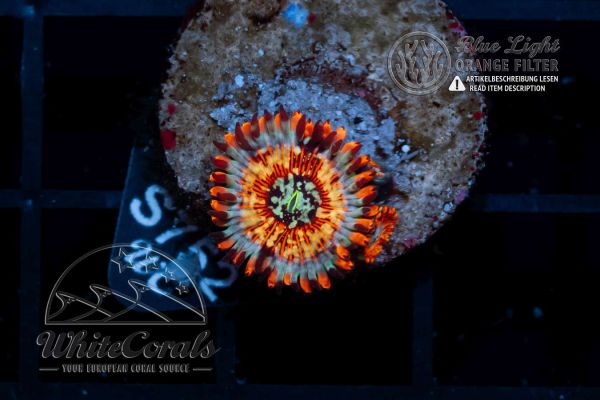Zoanthus
They are moderately light hungry and require stronger lighting - around 100 PAR - than other soft corals. You can tell that light levels are too low when they are stretching their bodies toward the light, and too strong when they are struggling and shrinking. Strong current is also important. There is often confusion over the exact classification of encrusting anemones to Zoanthus and the related genus Palythoa - but in principle it is quite easy to tell them apart: Palythoa have a rough surface as they absorb sand into their tissues, and their tentacles are more pointed than those of Zoanthus. Therefore, many of the encrusting anemones that are often referred to as "paly" are not palythoa at all, but zoanthus. They grow as a mat covering the rock, and their polyps are associated with a basal tissue known as coenenchyme.
Zoanthus encrusting anemones can be toxic because, like other encrusting anemones, they also store the palytoxin produced by dinoflagellates - though concentrations in their tissues are often lower than in Palythoa species. Nevertheless, contact of mucous membranes (mouth, nose, eyes and "where no light shines") and open wounds to the tissue secretion and mucus should be avoided as much as possible: that is, especially when fragmenting, it is best to wear gloves and protective goggles. It is best not to injure the animals mechanically, and be careful because the polyps can also spit. Palytoxin is a cytotoxin and can cause a variety of symptoms from a metallic taste on the tongue to flu symptoms and muscle paralysis, depending on which cells it affects. Since Zoanthus can multiply heavily - and mechanical removal is therefore rather unfavorable - it is recommended not to put them on the main reef setup, but to place them separately.
